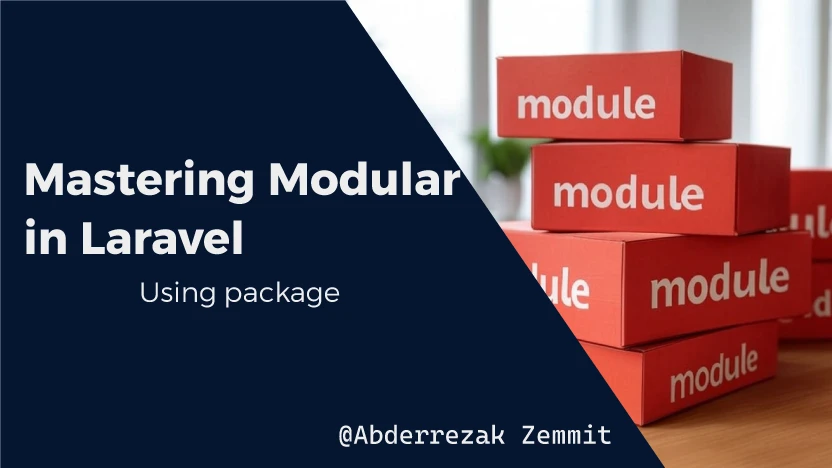Mastering Modular Development in Laravel
Introduction
Modular development is a powerful approach in Laravel, allowing you to break your application into manageable, independent modules. This structure enhances maintainability, scalability, and reusability. In this guide, we'll explore nWidart package, a robust package for building and managing Laravel modules efficiently.
What is nWidart Laravel Module?
nWidart is a Laravel package designed to simplify the creation and management of modules in your Laravel application. It provides a structured way to organize your codebase, making it easier to scale and maintain complex projects.
Why Use Windart for Modular Development?
-
Code Separation: Keep your logic isolated in individual modules.
-
Scalability: Add or remove features without affecting other parts of the application.
-
Reusability: Share modules across multiple Laravel projects.
-
Simplified Maintenance: Identify and resolve issues more efficiently.
Setting Up nWidart in Laravel
Step 1: Install a Fresh Laravel Application
If you haven't already, create a new Laravel project:
composer create-project laravel/laravel blog
cd blogStep 2: Install nWidart Package
Run the following command to install the nWidart package:
composer require nwidart/laravel-modulesStep 3: Publish nWidart Configuration
Publish the package configuration using:
php artisan vendor:publish --provider="Nwidart\Modules\LaravelModulesServiceProvider"Step 4: Create a New Module
To generate a new module, run:
php artisan module:make BlogThis command creates a Blog module inside the Modules directory.
Step 5: Module Structure Overview
Your newly created module will have the following structure:
Modules/
├── Blog/
│ ├── Http/
│ │ └── Controllers/
│ ├── Models/
│ ├── Routes/
│ └── Views/Step 6: Define Module Routes
Open the Modules/Blog/Routes/web.php file and add your module-specific routes:
<?php
use Illuminate\Support\Facades\Route;
use Modules\Blog\Http\Controllers\PostController;
Route::get('/blog', [PostController::class, 'index']);Step 7: Create a Controller
Generate a controller for the module:
php artisan module:make-controller PostController BlogUpdate the PostController:
<?php
namespace Modules\Blog\Http\Controllers;
use Illuminate\Http\Request;
use Illuminate\Routing\Controller;
class PostController extends Controller
{
public function index()
{
return view('blog::index');
}
}Step 8: Create a View
In Modules/Blog/Views, create an index.blade.php file:
<h1>Welcome to the Blog Module</h1>Step 10: Access the Module
Visit http://your-app-url/blog to see your module in action.
Conclusion
Using nWidart for modular development in Laravel simplifies project management and promotes better code organization. By following this guide, you can structure your application into independent modules, enhancing both scalability and maintainability.
Happy coding!


